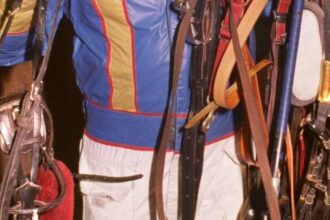The echoes of Canada’s gold medal victory at the 2022 Beijing Olympics have barely faded, yet the machinery of international hockey excellence is already humming with anticipation for Milano Cortina 2026. This week, as players laced up their skates for the first Red-White scrimmage of the new Olympic cycle, the preliminary sketches of Canada’s next women’s hockey powerhouse began to materialize on the ice.
The scrimmage offered more than just a competitive showcase—it provided a rare glimpse into Hockey Canada’s strategic thinking nearly two years before the Olympic flame is lit in Italy. For devoted followers of the women’s game, these early line combinations serve as tea leaves to be read, hinting at chemistry experiments and tactical evolutions that could define the team’s approach to defending gold.
“These early camps are crucial for establishing relationships on the ice,” veteran forward Marie-Philip Poulin told reporters after the scrimmage. “The coaching staff is looking at different combinations, seeing which players complement each other naturally.”
Indeed, the coaching staff’s line deployments revealed intriguing possibilities. The top unit featured Sarah Fillier centering a line with Poulin and Brianne Jenner—a formidable trio blending Fillier’s creative playmaking with the proven Olympic pedigree of her linemates. This configuration represents both continuity and evolution; Poulin and Jenner have been cornerstones of Canada’s international success, while Fillier emerged as the program’s next superstar during the Beijing cycle.
The defensive pairings showed similar strategic thinking, balancing established partnerships with fresh combinations. Jocelyne Larocque, entering what would be her fourth Olympics in 2026, was paired with Ella Shelton, whose stock has risen dramatically in recent international tournaments. The veteran-youth dynamic was a consistent theme throughout the lineup, suggesting a deliberate approach to succession planning while maintaining competitive dominance.
“What’s fascinating about this particular Olympic cycle is how much deeper our talent pool has become,” explained Gina Kingsbury, Hockey Canada’s director of operations. “The professional women’s leagues have accelerated development, giving us more elite players competing for roster spots than ever before.”
The emergence of the Professional Women’s Hockey League (PWHL) has indeed transformed the landscape. Players no longer disappear from high-level competition between Olympic cycles, instead maintaining peak performance through intense professional seasons. The scrimmage reflected this reality, with notably crisp execution and mid-season form despite the calendar showing early September.
For goalkeepers Ann-Renée Desbiens and Emerance Maschmeyer, who shared netminding duties for Team White, the elevated competition provides both challenge and opportunity. “The shooters are just getting better every year,” Desbiens noted. “What used to be considered an elite release is now standard across the top two lines.”
Perhaps most telling was the integration of several U-22 program graduates into the main roster scrimmage. Defenders Claire Thompson and Ashton Bell, both of whom made significant impacts as Olympic rookies in Beijing, now find themselves in leadership positions, mentoring the next wave of talent pushing for inclusion.
The road to Milano Cortina remains long, with international tournaments, evaluation camps, and the crucible of PWHL seasons still to navigate before the final roster crystallizes. Yet these early line combinations offer fascinating insight into how Canada might approach the defense of its Olympic crown against an increasingly competitive international field.
The United States, Finland, and Switzerland have all made significant strides in their programs, while emerging hockey nations continue to narrow the gap through professionalization and investment. Canada’s methodical approach to building its next Olympic roster reflects an understanding that maintaining supremacy requires both innovation and respect for what has worked historically.
For Canadian hockey fans, these early glimpses of potential Olympic lines serve as a reminder that excellence is not accidental but carefully constructed through years of planning, evaluation, and development. The page has turned from Beijing’s golden chapter, and the story of Canada’s 2026 Olympic journey has begun to be written—one line combination at a time.
For more sports analysis and cultural commentary, visit our CO24 Culture and CO24 Trends sections, where we explore the intersection of athletics and society.














